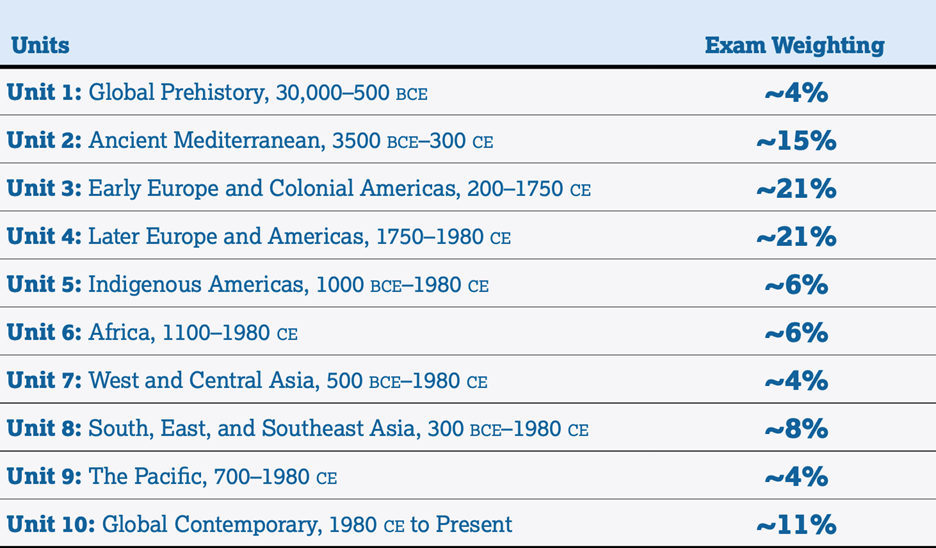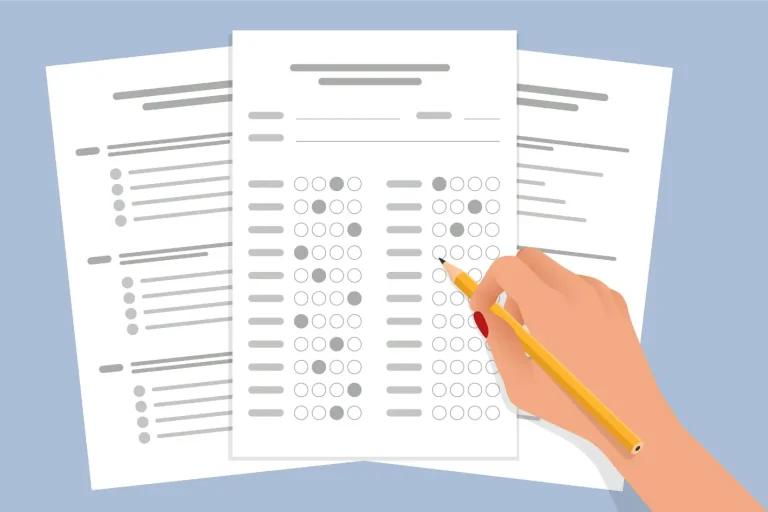85% of Aralia students win prizes visual arts competitions
1. AP Art History Exam Details
At a glance, AP Art History requires a 3-hour long exam with 80 multiple choice questions and six free response questions. The exam centers around an image set of 250 selected pieces of art (listed below), from 30,000 BCE prehistoric art to present-day contemporary art from all parts of the globe– although greater emphasis is placed on art from Europe and the Americas from 200-1980 CE. As with all Collegeboard AP exams, AP Art History is scored out of 5. Getting a 4 or a 5 (depending on your college) can give you pre-matriculation college credits.
When is the AP Art History exam 2024?
Monday, May 6, 2024, 12pm local
2025 exam dates have not been released yet, but students can expect it to be in early May.
AP Art History Exam Format
AP Art History is separated into two sections, with multiple-choice questions and free-response questions.
Section 1 has 80 multiple-choice questions, lasts 1 hour, and is worth 50% of your score. Roughly half the questions are in sets of 2-3, and the other half are individual questions. These questions will test you on works of art both in and beyond the 250-image set; pictures of the artwork will be provided in color. Section 1 tests the following skills: 1) Analyze visual and contextual elements of works of art and link them to a larger artistic tradition, 2) Compare two or more works, 3) Attribute works of art beyond the image set, 4) Analyze art historical interpretations. Skills will be described in detail later on in this blog.
Section 2 has six free response questions, lasts 2 hours, and is worth 50% of your score. You should spend 35 minutes on Q1, 25 minutes on Q2, and 15 minutes each on Q3 through Q6. All questions, except question 2, will include images of the artwork discussed at hand. The six questions are described below:
Question 1: Comparison is a long essay question that assesses students’ ability to compare a work of their choice with a provided work from the image set and articulate a claim, explaining the significance of the similarities and differences between those works and citing evidence to support their claim.
Question 2: Visual/Contextual Analysis is a long essay question that assesses students’ ability to analyze visual and contextual features of a work of art from the image set (image not provided) and respond to the prompt with an art historically defensible claim supported by evidence.
Question 3: Visual Analysis is a short essay question that assesses students’ ability to analyze visual elements of a work of art beyond the image set (image provided) and connect it to an artistic tradition, style, or practice.
Question 4: Contextual Analysis is a short essay question that assesses students’ ability to analyze contextual elements of a work of art from the image set, and explain how context can influence artistic decisions or affect the meaning of a work of art.
Question 5: Attribution is a short essay question that assesses students’ ability to attribute a work of art beyond the image set (image provided) and justify their assertion by providing specific visual evidence.
Question 6: Continuity and Change is a short essay question that assesses students’ ability to analyze the relationships between a work of art from the image set and a related artistic tradition, style, and/or practice.
How is the AP Art History exam scored?
Each section is worth 50% of the total exam score. Again, there are 80 multiple-choice questions and six free-response questions. Out of the free response questions, Q1 is worth 8 points, Q2 is worth 6 points, and Q3 through Q6 are each worth 5 points.
The table below shows which locations and periods of artwork are weighted more heavily on the exam. Use this as a study guide to determine which type of art history to focus more on while studying. Additionally, check out the AP Art History Free Response Scoring Guidelines from 2023 and 2022. These scoring guidelines include past exam questions and summarize what elements of your answer will give you points.

AP Art History Pass Rate
AP Art History’s pass rate as of the latest 2024 exam results was 63%. Students need at least a 3 to pass, but you should aim for a 4 or 5 to earn college credit. Take a look at the below 2024 AP Score Distributions table to see how students performed in the 2024 AP Art History exam.


2. How to prepare for AP Art History / How to study AP Art History / AP Art History Study Guide
Memorize the AP Art History 250
The 250 image set is chosen by Collegeboard specifically for AP Art History, because the images “represent foundational exemplars of global artistic traditions. The works in this image set have been selected to encourage students’ careful study, critical analysis skills, and understanding of connections among global artistic traditions.” It’s absolutely essential that you memorize the details and understand the significance of all 250 required pieces. View the set.
Is AP Art History just memorization?
For the most part, yes. Use Quizlet’s digital flashcards to help you memorize all 250 pieces in the AP Art History curriculum. For videos to help you stay focused, check out these YouTube channels: Collegeboard, Crash Course, Fleet’s AP Art History, and SmartHistory Art History. Another reliable video-based source is Khan Academy. Although not catered to AP Art History, it covers art history very extensively. Both Crash Course and Barron (2020) have published physical AP Art History books—check your local bookstore.
AP Art History Sample Past Exam Questions
Practice multiple-choice and free-response questions from past AP Art History exams.
Is AP Art History hard?
AP Art History’s pass rate is slightly lower than other AP exams, as shown in the AP score distributions; hence, it’s moderately challenging. If you’ve got the details and significance of the 250 pieces down and understand how each piece, artist, and movement relate to their context, you’ll be in a really good spot. Practice answering past exam questions and follow the other tips outlined in this blog.
Unleash Your Creativity: Join Aralia’s Visual Art Competition Prep Classes
3. Skills you need to pass AP Art History
The AP Art History Course Materials (Effective 2020) covers a detailed list of all the skills and knowledge you need to study for the exam. We’ve broken it down for you below:
Visual Analysis: Identify details of a work of art such as title, artist, origin, materials, style, etc. and explain intentional artistic decisions.
Contextual Analysis: Describe how the artwork’s context, intent, function, etc. shape its significance and reception. Identify other timely influences and explain their effects.
Comparison of Works of Art: Compare and contrast pieces of art both visually and in terms of meaning.
Artistic Traditions: Illustrate artistic traditions’ change or continuity over time and its influence on other traditions.
Visual Analysis of Unknown Works: Analyze artwork outside of the required 250 image set. Instead of naming the pieces, describe other visual elements such as form, style, materials, technique, and artistic decisions.
Attribution of Unknown Works: Analyze artwork outside of the required 250 image set. Situate the artwork in a movement, artist, culture, etc. and discuss similarities.
Art Historical Interpretations: Describe other critics’ relevant interpretations and how they are valid and derived from analysis of form, style, context, meaning, etc.
Argumentation: Construct a complex argument with evidence about one or more works of art. Defend your position on a nuanced issue, connections, a critic’s (in)effective art historical claim, and conclude with alternative views.
4. Why should you take AP Art History?
Studying for AP Art History is lot of work– certainly not an easy feat– but it will also set you apart since it’s not a commonly taken exam. Realistically, a 4 or 5 on the AP Art History exam won’t have a significant impact on your college application. However, it will help you develop essential study skills (memorization, acute literary and visual analysis, and independent critical thinking) that most other AP courses do not do as well as AP Art History.
AP Art History can be very rewarding if you are able to set aside a lot of time for memorization and put in the work. Studying art makes you a highly intellectual person, well-read in the entire world’s history and wide variety of cultures. You’ll be able to engage in very interesting, in-depth conversations, which will bring you far in the world of higher education and the workforce when you’re networking with potential colleges as well as colleagues/hiring managers.
AP Art History vs. AP World History
As you can see above, AP Art History and AP World History had similar score distributions in 2024, which may indicate their similar difficulty levels. It may be very helpful to take both at the same time, since they supplement each other nicely and will make studying a lot more efficient. Ultimately, the decision on which one to take depends on whether you are more interested in art and culture (AP Art History) or politics and economics (AP World History). Learn more about AP World History.
Aralia's Courses

This AP Art History Preparation Class is designed for high school students who are passionate about art and are seeking to excel in the AP Art History exam. The course offers a comprehensive overview of art history, spanning from prehistoric times to contemporary art.










